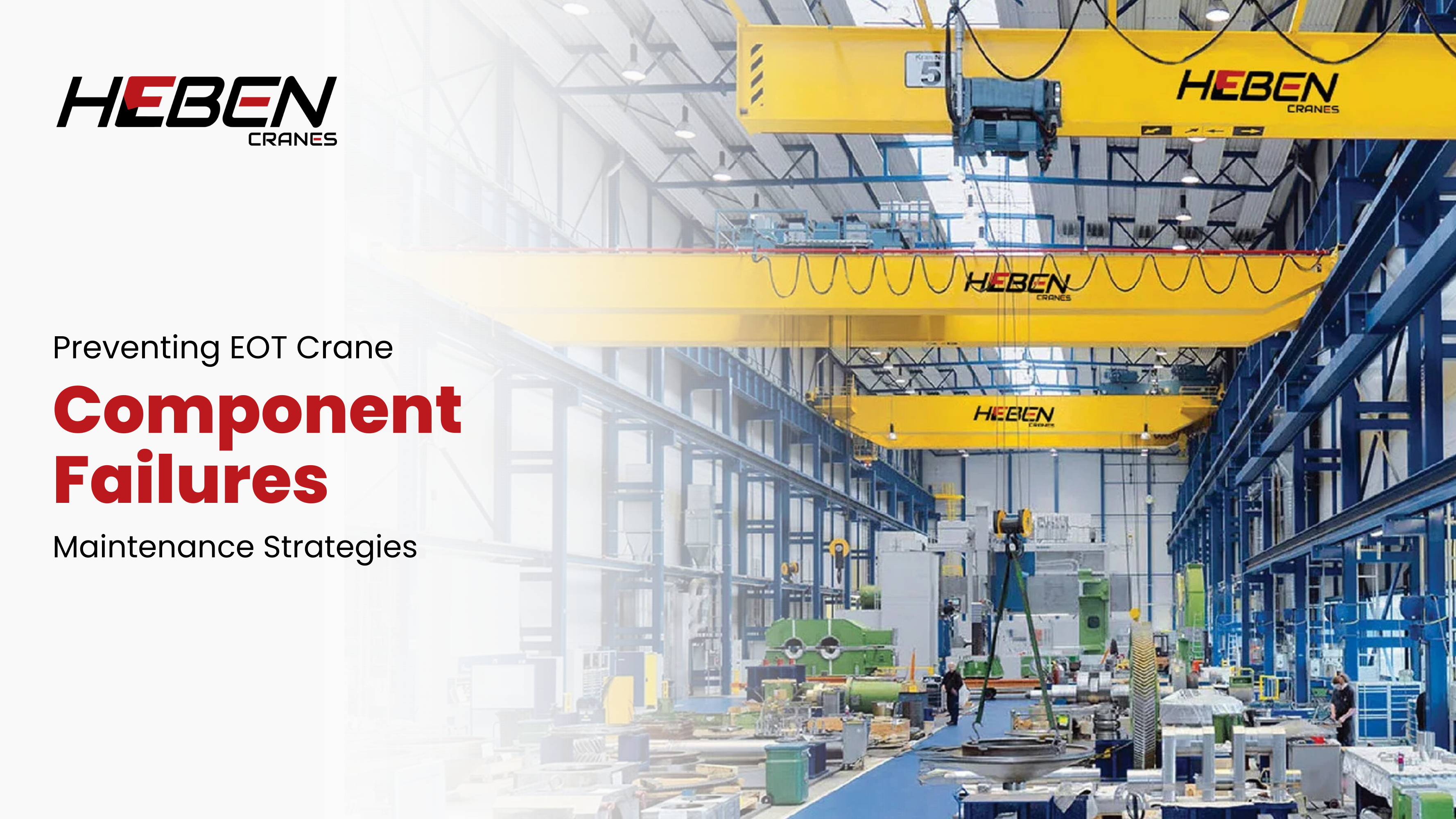Electric Overhead Traveling (EOT) cranes are indispensable in various industries, facilitating the movement of heavy loads with remarkable efficiency. However, like all machinery, they are subject to wear and tear, which can lead to component failures if not properly maintained. Understanding these common failures and implementing preventive measures is crucial for ensuring safety and operational efficiency. This article delves into the typical component failures in EOT cranes and offers practical strategies for prevention.
Understanding EOT Crane Components
EOT cranes consist of several key components that work together to lift and move loads. These include:
- Hooks: Designed to securely hold the load.
- Wire Ropes: Essential for lifting; they bear the entire weight of the load.
- Controllers: Manage the crane’s movements.
- Brakes: Ensure the safe stopping of the crane.
- Reducers: Help in controlling the speed of movements.
- Electrical Systems: Power the crane’s operations.
Each component plays a vital role in the crane’s functionality, and failure in any part can lead to significant operational issues.
Common Component Failures
Hook Failures
Hooks are critical for safely lifting loads, but they can become damaged over time due to continuous usage. “If a load above the rated load is lifted, the lift may get bent or damaged,” warns ABCO Engineers. Regular inspection for deformation or cracks is essential to prevent accidents.
Wire Rope Degradation
Wire ropes are particularly susceptible to damage as they endure significant tension during operations. Common causes of degradation include:
- Continuous usage beyond rated capacity
- Corrosion at connection points
- Worn-out wires within the rope
It is important to inspect every part of the wire before operation to avoid any accidents. Ensuring proper lubrication and replacing compromised ropes immediately can mitigate these risks.
Controller Malfunctions
The controller is responsible for managing the crane’s movements. Issues such as poor contact or disconnections can lead to malfunctions. Regular testing of control buttons and connectors is crucial to ensure they respond correctly. Test all control buttons and connectors to ensure they respond correctly.
Brake Failures
Brakes are vital for safely halting crane movements. Faulty brakes can pose serious workplace hazards. Regular checks should confirm that brakes engage and release smoothly. Neglecting brake maintenance can lead to catastrophic failures during operation.
Reducer Faults
Reducers control the speed of crane movements, and wear over time can lead to inefficiencies or failures. Regular lubrication and inspection are necessary to ensure that reducers function properly.
Electrical System Failures
Electrical systems are integral to EOT cranes, powering all operations. Common issues include blown fuses, contact interruptions, or wiring problems. Timely inspection and repair of each of these components is key. Regular checks can prevent electrical failures that could compromise safety.
Prevention Strategies
Regular Inspections
Routine inspections are the first line of defense against potential failures. Daily checks should include:
- Inspecting hooks and chains for deformation or excessive wear.
- Checking wire ropes for fraying or corrosion.
- Testing control systems for responsiveness.
- Ensuring brakes engage smoothly.
By performing these checks regularly, you can preemptively address potential failures.
Proper Maintenance Practices
Proper maintenance practices extend the lifespan of EOT cranes significantly. Key practices include:
- Lubrication: Regular lubrication minimizes friction and wear on moving parts. It’s essential to lubricate gears, chains, pulleys, and other components according to manufacturer guidelines.
- Load Management: Operators must adhere strictly to load limits. Overloading can lead to structural damage and increase wear on components.
- Training and Awareness: Operators should be well-trained in safe operating procedures, including recognizing early signs of failure.
Utilizing Quality Spare Parts
When replacing parts, always opt for manufacturer-recommended components. Using inferior-quality parts can compromise safety and efficiency.
Addressing Minor Repairs Swiftly
Timely attention to minor repairs prevents them from escalating into major issues. As noted by Global EHS, “Addressing minor repairs swiftly is crucial.” Regular maintenance schedules should include checks for loose connections or damaged components.
Conclusion
Understanding common EOT crane component failures and implementing preventive measures is essential for maintaining safety and operational efficiency in industrial settings. By conducting regular inspections, adhering to maintenance best practices, managing loads effectively, providing training for operators, using quality parts, and addressing repairs promptly, you can significantly reduce the risk of component failures.
EOT cranes are vital assets in many industries; treating them with care ensures their longevity and reliability. As passionate amateurs in this domain, your commitment to learning about these systems will not only enhance your operational knowledge but also contribute positively to workplace safety standards.




